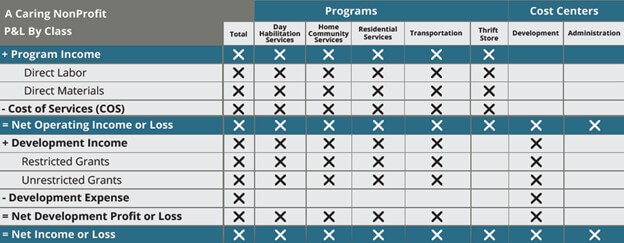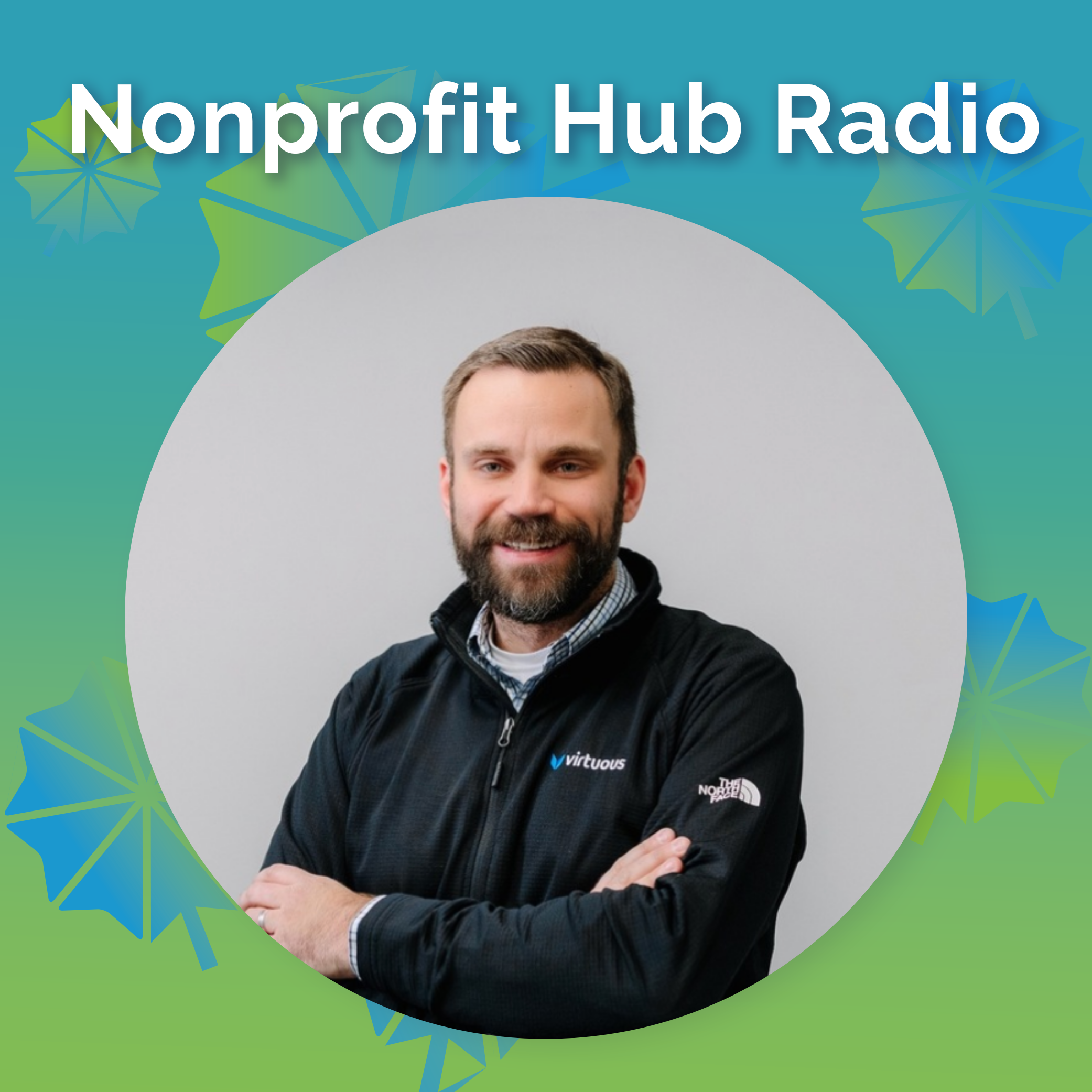This blog was sponsored by GrowthForce
Pop quiz! What accounts for more donations in the nonprofit world: A) larger corporations or B) individual donors?
If you answered A, you are not alone. One of the biggest misunderstandings is that larger corporations are the biggest givers to nonprofits. In reality, it’s the complete opposite—over 80% of donations come from individual donors.
Donors give for a variety of reasons, like a personal connection to an organization. They may give because of a foundation’s proximity, or because they feel moved by the cause. Perhaps they donated because of a unique marketing strategy. However, there is one underlying theme when donors give more consistently: when they are made aware of the exact, potential impact their dollars will have.
It’s evident that when you can show a donor the tangible return on investment (ROI) of their gift, you get a higher average gift and more frequent giving.
As you know, improving donor relations is a critical component in every organization’s strategy. If you aren’t using your numbers to help strengthen this relationship, you may be missing out on some big opportunities (and money!).
First Things First: Get The Data
The secret to successful fundraising lies in knowing your numbers.
Having your fingers on the pulse of your nonprofit’s financial data has many benefits. The transparency of this information allows everyone in your organization to stay on the same page—management, development directors, program directors, the board, etc.
To get started, have your bookkeeper set up your accounting system to show Development Profit & Loss as a separate cost center.
Why is this important? It allows you to see which fundraising activities provide the highest ROI and contribute the most to your fundraising goals.
This information is a game-changer. It enables you to show donors and the board how much money gets spent on programs versus administrative costs. Best practices are to spend 12¢ per dollar to raise $1. Donors want to know their money is furthering your organization’s mission, and this is the tangible way to prove it.
When you show the donors the tangible results of their gift—aka the return on investment to their contribution—they are more inclined to give more knowing more specifically how they are helping.
Review Important Nonprofit Metrics
Once your books and chart of accounts are set up properly, you’re ready to analyze key metrics to help drive outcomes. For example:
Program Efficiency
How can you calculate this? Program Efficiency = Program Expenses / Total Expenses
What will this tell you? Calculating program efficiency helps you assess how efficiently your organization is fulfilling its mission statement. It also gives you a powerful tool to show your donors how effectively your organization operates (i.e. how much of their donation will go toward good deeds rather than administrative costs).
How can this help your nonprofit? Donors want to see exactly how their dollars are being spent. Measuring this will help your donors determine which program they will want to contribute the largest amounts to. These are usually the programs with the most tangible results. The more you demonstrate to a donor how their contribution makes an impact, the more money you can raise.
Bottom line: Often, nonprofits believe events are their biggest fundraising activities. This is rarely the case. Having visibility for the economics of each of your programs allows you to see the value of each output. The programs with the highest efficiencies are the programs you want to focus your fundraising efforts around—the ones with the highest outputs. You know these will have the highest impact that you will be able to show donors.
Donation ROI
How can you calculate this? Donation ROI = Total Fundraising Costs / Total Dollars Raised
What will this tell you? Use the donation ROI equation to determine how much your organization spends to bring in donation dollars.
How can this help your nonprofit? Using this metric, you can determine your most successful events, fundraising channels, and donor types. You can see whether any fundraising channels are costing your organization more money than they’re generating. This information will help you strategize which channel to target.
Bottom line: You can use this metric both organization-wide, and as a closer look at fundraising event, campaign, donor type, or channel. For example, look at the donation ROI for a silent auction event, a direct mail campaign, funds raised through your website, or a social media campaign.
Persons Served
How can you calculate this? Beneficiaries Served = Number of Beneficiaries / Period of Time or Program
What will this tell you? Calculate the number of people served over a specific period of time or program to compare different outreach efforts and to see how your impact grows.
How can this help your nonprofit? To know your impact, you need to find out how many people your organization has reached. This will help you see if your efforts are reaching them enough to achieve the nonprofit’s intended missions. Plus, this will give you a nice number to be able to share with donors. That way, they have a tangible number on how many people they have reached from their gift.
Bottom line: Measuring these outcomes will help your nonprofit determine which programs you should allocate more of your fundraising budget to in order to increase your impact.
3 Ways to Show Donors the Impact of Their Donations
Now that you know what numbers have weight behind them, the next big question is what to do with this data?
Donations to your organization cultivate an ROI that extends beyond the monetary funds. The cumulative impact of any single nonprofit’s efforts is powerful enough to change the future. Here are three ways you can show donors the potential impact of their donations.
1. Data Storytelling: Tell the Story About Donation Dollars
Storytelling is essential for a nonprofit. Using your numbers to level up your storytelling will transform your narrative to make a more powerful impact.
When you tell stories about the impact that donations have on the people you serve, you connect your donors to the intrinsic reward of supporting a good cause.
The proof is in the numbers: Studies show that storytelling plays a significant role in two key areas: memorability and persuasiveness. A study from Stanford professor Chip Heath found that 63% of participants could remember stories, but only 5% could remember a single statistic.
In another study, researchers tested two versions of a brochure for the Save the Children charity organization. One of them featured statistics on the plight of African children and one was a story of Rokia, a seven-year-old from Mali, Africa. The story-based version outperformed the infographic version by $2.38 to $1.14 in terms of donations per participant.
Every nonprofit has these types of stories to tell. Regardless of your mission, you have the immense power of storytelling that can inspire your donors to give.
2. Attach Each Gifting Amount to an Outcome for Donors
With good expense allocation, you can determine the exact cost of all the services you provide. This will let you connect different levels of giving with the specific services those dollars will help you provide. This transforms your donation ROI from abstract numbers into concrete narratives.
For example, a nonprofit that provides shelter might be able to advertise that with just $6,000 in donations, ten more people can be removed from homelessness. Perhaps they can say that $36 equals one day of programs for adults with disabilities, or that by giving 10 cents a day, you can feed a hungry person.
You could advertise that $22 provides a day of meals to a community, $25 funds a day of education, $50 supports community maintenance, $100 supports staffing, and so on. When soliciting donations, this allows you to outline various levels of giving and what each means to your nonprofit.
By connecting different donation tiers with specific short-term outcomes, you can inspire new and repeat donors to continue and/or increase their gifts.
3. Create (or Improve) Your Donor Stewardship Program
Donors want to know their gift is making a difference. The number one reason why donors leave an organization is that they fail to understand if the organization is accomplishing its mission. One way to hold onto your donors is through nailing your donor stewardship.
Donor stewardship focuses on communications and relationship-building that take place after a gift has been received from a donor.
This is where donor stewardship programs are key. Creating a systematic process to recognize donors after they make their gift will improve your donor retention rate. In addition, making sure no donor falls through the cracks will yield a higher gift.
Here are three key factors for your donor stewardship program:
- Segmentation: Segment your donors. This can be done by many different thresholds (examples: gift size or geographic area). Once your donors are segmented, this will help you set guidelines on how to recognize and tailor your message.
- Communication: Create a communication schedule. This is arguably the most important piece of donor stewardship. Communications should be personalized based on each segmentation. While these efforts should be consistent, they should not be overwhelming.
- Feedback: Following up on your communication strategy, consider including a feedback portion. Check-in with the donor to see how they are feeling. This will let them feel like a valuable part of your organization and increase their engagement.
Keep track of each donor’s ROI on their gifts, and make a point to include the information in each donor’s personalized hero story that you include in your follow-up donor messaging.
How a Robust Back Office Can Help You Serve More People (and Raise More Money)
With an outdated bookkeeping and accounting system, calculating your donors’ ROI cannot be easily or accurately done. Attempts to track metrics related to your nonprofit’s impact and ROI without a system of robust, streamlined accounting tools will only serve to strain your already limited resources.
After working in the nonprofit financial management industry for 35 years, I saw the difference it made when organizations used accounting as a fundraising tool. Nonprofits are harder to run than for-profits. Having done both, I know the important advantages of looking at the numbers.
I started GrowthForce to continue to honor my commitment to philanthropy. At GrowthForce, we specialize in nonprofit bookkeeping and accounting. What makes our work meaningful is how we can help our clients help more people.
Partnering with a team of accounting professionals enables nonprofits to leverage a powerful back office. That means you can focus on what matters: serving more people and raising more money. If you are struggling with financial management or not getting actionable insights for your board to make smarter decisions, have a conversation with one of our nonprofit performance specialists.







